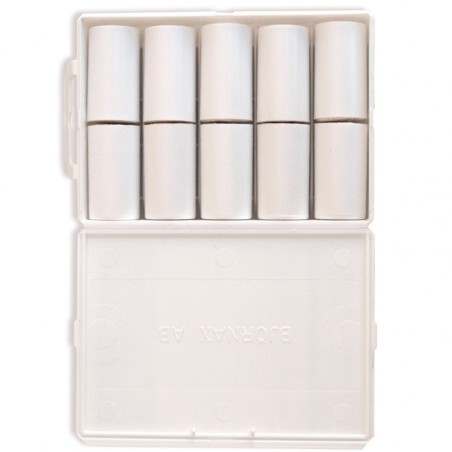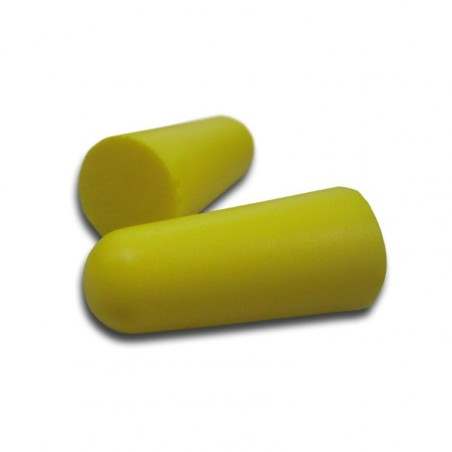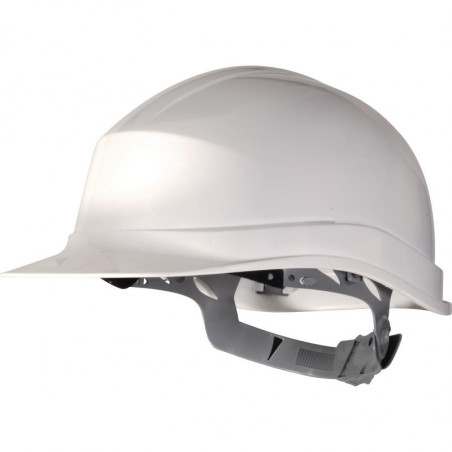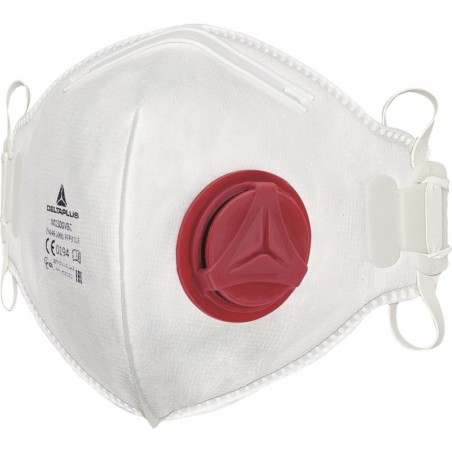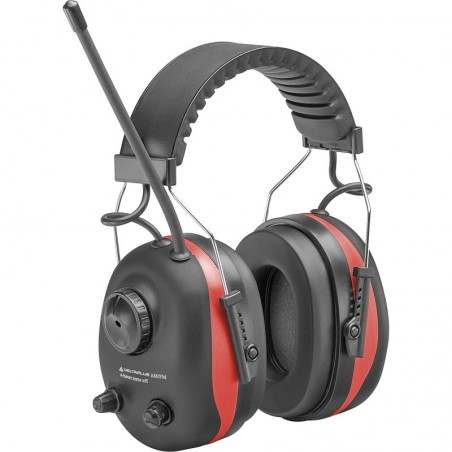Respiratory Hazards
Gases
The risk from hazardous manure gases (hydrogen sulfide (H2S), ammonia (NH3), and methane (CH3)), was described in a previous article.

Hydrogen sulfide exposure can cause sudden death in high concentrations. Ammonia exposure can lead to chronic respiratory illnesses, especially when combined with breathing dust in livestock buildings. Methane may cause a fire or explosion hazard. The main problem occurs with anaerobic respiration (without oxygen) and with deep (greater than 1 m) pits.
Prevention of hazardous gas release:
- If H2S is a continuing problem, check the water supply for sulfates. If sulfates are high (more than 250 ppm), there is potentially higher H2S in the slurry. Find another source of water: municipal source, or drill a new well.
- Choose smooth flooring that cleans easily, as 40% of the NH3 in the air in buildings comes from manure-covered floors. A clean floor will keep ammonia levels down, therefore implement a routine of power washing at 3- 4 week intervals to reduce NH3.
- Risk of sudden release of H2S from liquid manure increases with agitation when pumping. The greater the agitation, the more likely toxic concentrations of hydrogen sulfide will be liberated. Therefore begin agitation slowly. Make sure the ventilation is full on. DO NOT GO INSIDE WHEN AGITATING. Observe from the outside if pigs seem agitated or nervous. If so, stop agitation, wait a few minutes, then start slowly again and observe from outside. If it is impossible to pump the pit without harming the pigs, slaked lime may be added to the pit to lower the pH, with the aim of keeping more H2S in solution and not released from the liquid.
- Do not let the pit get very full. Pump the pit several times per year, if possible to decrease the risk.
- The use a half-face respirator with a dust cap and an ammonia cartridge will help reduce inhalation of ammonia, as well as dust (see attached image).
- However, only a self-contained breathing apparatus (like what firemen use) is safe for use of a person is going into a pit, or inside a building where H2S has been a problem when agitating.
- There also is a risk of people being poisoned with H2S when pumping outdoor manure storages, if they are standing downwind.
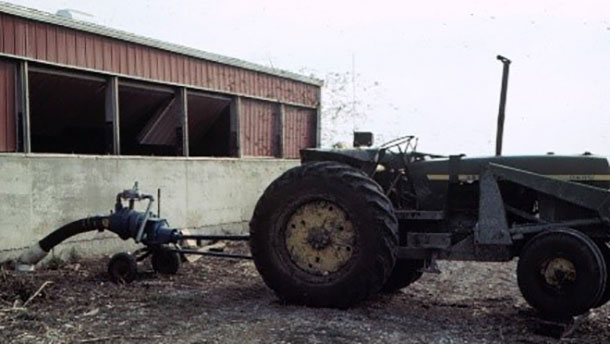
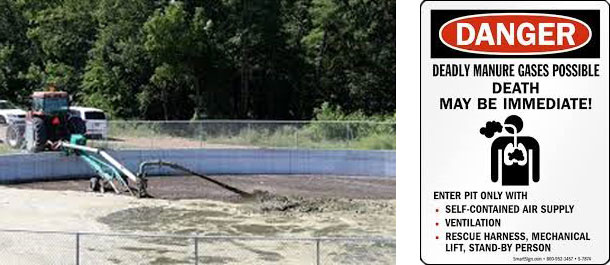
Dust
Dust is the main hazard for the occurrence of chronic respiratory illness in workers in pork production. Prevention includes two measures: 1) keep dust out of the air; and 2) wear a properly fitted respirator.
Some ways to reduce dust in the air include:
- Add an extra 1% of oil to the feed (e.g., soy oil, canola oil, or other type of plant or animal based oil).
- Power wash floors, walls, fences and cages every 3-4 weeks, as much of the dust in the air in swine buildings is re-introduced from flooring or other level surfaces,
- Have good self-cleaning floors.
- Institute a rotating job schedule for workers from very dusty tasks (e.g. moving, sorting, load out, and finishing operations) to less dusty jobs (e.g. farrowing rooms, gestation rooms).
- Establish a non-smoking policy and or offer smoking cessation programs for workers (cigarette smoking doubles the risk of respiratory illness in pork producers/workers).
- Assure the ventilation system is in sound working order at all times.
- Have a policy to supply respirators for workers, especially performing dusty tasks such as moving, sorting, load out, finishing operations.
- Build in some engineering systems to reduce dusts such as (See references below):
- Install a vegetable oil sprinkling system which can reduce dust by 75%
- Install a recycling dust filtration system
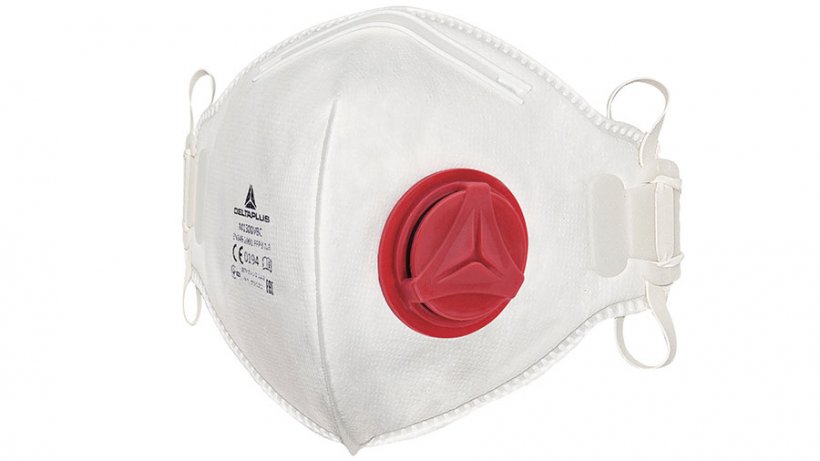
Needle Sticks
As was covered in depth in my prior article, needle sticks among pork producers are frequent and cause important illness, loss of work time, and medical expense.
Noise
Noise-induced hearing loss is a significant hazard in swine production. The following are important ways to reduce the risk of hearing loss.
- Consider ways to separate workers from noisy tasks. For example, feed sows in gestation with a remote feed delivery system.
- Install sound absorptive materials (for example, sound-dampening ceiling tiles) in noisy areas i.e. gestation and farrowing and wherever blood sampling takes place;
- Wear hearing protection during noisy tasks such as bleeding, feeding in gestation and farrowing areas, moving and loading pigs.
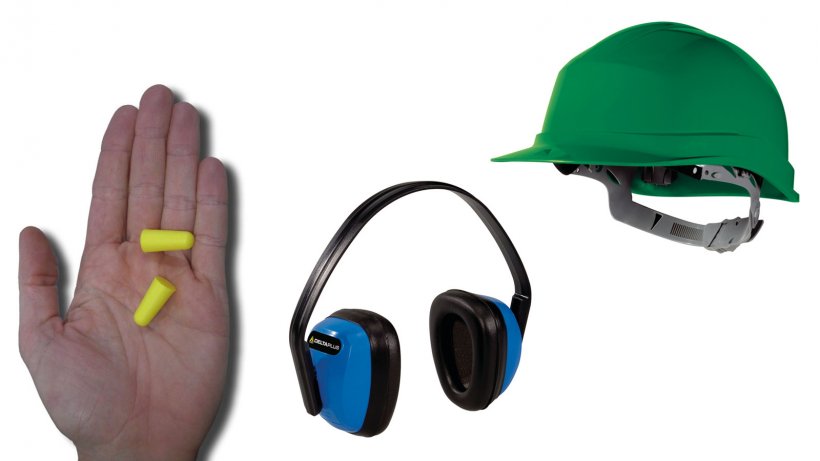

The above suggestions are a brief summary of preventive measures. More details can be found in the following references.
References:
- Nonnenmann, MW, Donham, KJ, Rautiainen, RH, et al. Vegetable oil sprinkling as a dust reduction method in swine confinement. Journal of Agricultural Safety and Health (January, 2004); 10(1):7-15.
- Anthony, TR, Altmaier, R, Park, JH, and Peters, TP. Modeled effectiveness of ventilation with contaminant control devices on indoor air quality in a swine farrowing facility. (2014) Occupational and Environmental Hygiene, 2014; 11(7).
- Donham and Thelin. 2016. Agricultural Medicine: Rural Occupational Health, Safety, and Prevention. Wiley and Sons, pp. 143-149,278-282, 333-336, , Appendix A 532-544





